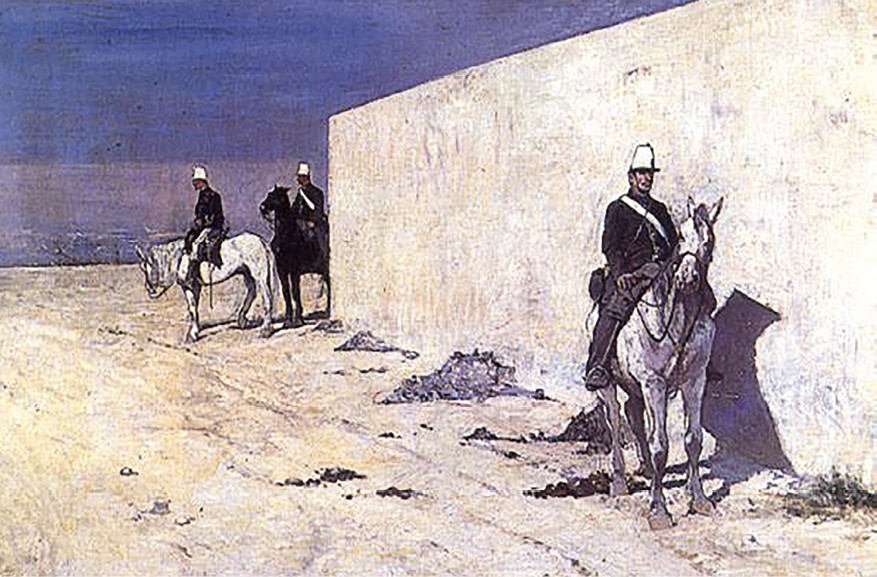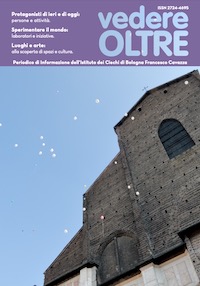Last winter, an exhibition dedicated to artist Giovanni Fattori, a leading proponent of the Tuscan Macchiaioli current, opened at Palazzo Fava in Bologna. The exhibition was marked by the straightforward and sincere depiction of a painter capable of reading with feeling and lucidity the existence of men, animals, and landscapes in relation to each other. The exhibition, centred on the unchanging nature of human feeling, highlighted the principle of eternity that, in Giovanni Fattori’s painting, underlies the circumstance of events. It is an invitation to interpret in depth certain technical and stylistic choices, to grasp the value of the stain painting as a figure of truthful representation of the subjects portrayed. Born and raised in Livorno, Fattori soon showed a great aptitude for painting and drawing, so in 1846 he moved to Florence to study at the Accademia di Belle Arti, although precarious economic conditions forced him to work to support himself, making his studies difficult. In 1848, he took part in the Risorgimento uprisings, and from the ’50s he began to be a regular at the Caffè Michelangelo: cultured and avant-garde environment that saw the ideas of the Macchiaioli flourish, ideas that Fattori embraced without ever taking sides uncritically with the movement. Adherence to this artistic atmosphere is a response to some impatience he had already shown with the celebrated historical expression typical of the Academy. His was a spontaneous inclination to the real, which led him to investigate the reality of landscapes, animals, and humble people, to fully capture their suffering and to portray their difficulties. In 1869, Giovanni Fattori was appointed professor at the Academy of Fine Arts in Florence, and this was a decisive moment in his professional life: he gained great recognition.

In later years he travelled to Paris to see the Impressionists performing but was not fully enthralled. Despite a special mention at the Universal Exhibition in Paris, to be regarded as the most important of the recognition received by the artist throughout Europe, Fattori remained strongly anchored in the feeling of nature and his native environment. His painting technique owes much to the academic approach but soon veers in the direction of unparalleled autonomy. The artist gradually approached stain painting and sensed its potential: he cultivated it and adopted it to tell the perceived reality on canvas, with expressive sensitivity, fine stylization, and perfect synthesis. Its reality is that of an agricultural Italy, newly reunited and deeply tied to the territories to which it belongs, where the only element that unites the regions is the countryside. In this brief discussion, I would like to mention two famous paintings that are evidence of his genius and soul, as insightful as they were sensitive. The first, In vedetta, is marked by a unique compositional minimalism.
.jpg)
Dated 1872, the work reveals an essential and bold geometry that revolves around a wall seen in foreshortened perspective at the far end of which stand two mounted soldiers, on patrol in the distance, bathed in a relentless, afternoon summer light that silhouettes their shadows against the dusty ground and the white wall, flanked by the third horseman, advancing towards the viewer. A clear blue sky towers above them. Stillness, movement, and waiting coexist perfectly in this image. The second painting is Lo staffato. Here, Giovanni Fattori’s contemplative attitude gives way to a stark realism, combined with a strong and traumatic sense of irreversibility. In the centre of a bare and undefined setting we see a wounded soldier who, because of a foot caught in a stirrup, is dragged by a galloping horse, shaken, that is, with no rider left on the saddle. It is a drama that is consumed in silence and solitude, despite the intuitive hollow sound of hooves on the rough terrain and the friction of the body being dragged, of which only a few traces will remain on the ground. The landscape, in the distance, appears motionless, barren, while the space that houses the scene, in the foreground, reveals an accelerated, curve-like perspective, as if to emphasize that rapid transition that is also a point of no return. Giovanni Fattori’s qualities, in addition to his masterful painting technique, are the absence of emphasis and directness in rendering the reality: an authenticity that made him unmistakable in his human feeling.





.png)